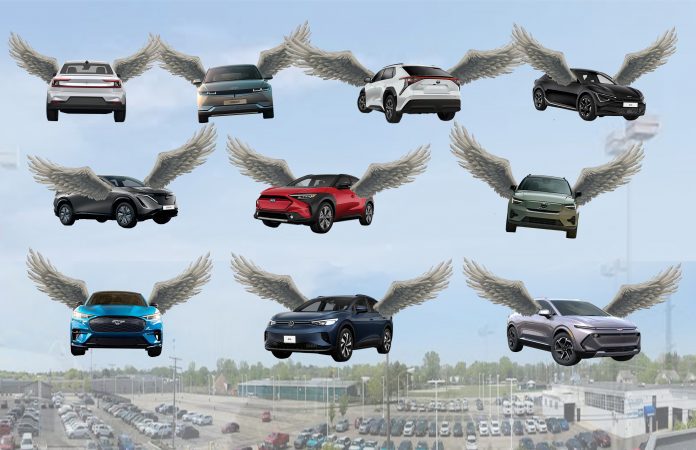It’s not futuristic flying cars that are winging their way off of dealer lots. In certain parts of the country, electric vehicles – both battery electric vehicles (BEVs) and plug-in hybrid vehicles (PHEVs) – are selling so fast some dealers cannot begin to keep up with demand.
Colorado recently surpassed California in having the highest percentage of electric vehicles versus traditional internal combustion engines (ICE), when the state hit 24 percent of total new vehicle sales and leases were electric powered, including both BEVs and PHEVs.
How did Colorado do it?
Both a carrot and stick approach is playing out in Colorado, wherein the state has voluntarily adopted California emission standards, starting with California Low Emission Vehicle (LEV) in 2018, and layering on California Zero Emission Vehicle (ZEV) standards in 2019. At the time of the Governor’s executive order calling ZEV mandate, in January 2019, the governor included a call for 940,000 electric vehicles to be added to Colorado’s overall consumer fleet of vehicles by 2030. That number, which is nearly impossible to meet even with the recent growth of EV sales would require, based on even current sales rates of new vehicles that every other new car sold in Colorado, starting at time of executive order would be to be electric.
Still, the State of Colorado has moved ahead of most states, even all states, on electric vehicle sales. Colorado offers the most generous incentives in the country. The most aggressive dealers in Colorado have figured out how to handle leases that are literally almost free under the layered incentives available. Some automakers have been re-directing allocation around the country to more electric vehicles send to Colorado in order to help meet the significant demand in most popular model. Some of the top dealers in the country are in Colorado as they have learned to take a take a pro-active, aggressive, and even progressive approach to EV sales.
Colorado has, at various times, offered these new electric vehicle incentives:
- Most buyers/leasers qualify for $5000 state tax incentive that can be applied at dealership toward the purchase or lease.
- Many consumers have qualified for incentives under the primary electric power provider, Xcel Energy.
- Income-qualified buyers were credited with an incentive for trading a high-emitting vehicle toward a new electric vehicle.
- Some manufacturers have also layered on additional factory incentives that further reduce the price of vehicles for consumers.
The landscape of vehicle incentives is complex and varies significantly from state to state. Generally, states that have adopted California’s vehicle emission standards—11 states plus the District of Columbia – offer generous incentives for battery electric and plug-in hybrids. Largely from tax credits, these states have led the charge in promoting new emission-free vehicles and are achieving a disproportionately high penetration level of electric vehicles.
However, it’s important to recognize that not all states provide the same level of support. Consumers that live in a state that has embraced these standards may be in a particularly advantageous position to benefit from substantial savings on their new vehicle purchase or lease. In fact, due to the structure of federal incentives, many more vehicles qualify for incentives under leases than do those through sales.
Yet, the federal landscape adds a new layer of urgency. The incentives initiated under the Biden administration for electric vehicles have been a game-changer for many consumers. However, with the pending transition to a new administration led by Donald J. Trump, there is significant uncertainty surrounding the future of these incentives. President-Elect Donald Trump has indicated intentions to roll back or eliminate EV incentives, which could drastically affect the financial benefits currently available to consumers.
This looming change adds to the urgency for those considering a new vehicle. For consumers not in California-emission states, the situation is less favorable toward gaining additional state or local level incentives. Many regions simply do not offer the same incentives, making it crucial for buyers to explore their options otherwise.
For consumers in a state with limited or no incentives, it’s still wise to consider purchasing soon. The overarching trend is a likely reduction in financial support for electric vehicles, making a 2025 purchase or lease, rather than 2024 potentially more financially burdensome.
In summary, consumers in the market for a new vehicle, especially an electric one – battery electric vehicle (BEV) or plug-in hybrid vehicle (PHEV) – don’t delay. Investigate available incentives in your state and make your move before the end of the year.
By acting now, consumers can take full advantage of the current incentives and potentially save a significant amount of consumer money. Whether you’re in a state with generous electric vehicle incentives or navigating a less lucrative landscape, the message is clear: the best time to buy is before the clock runs out on valuable financial benefits.



